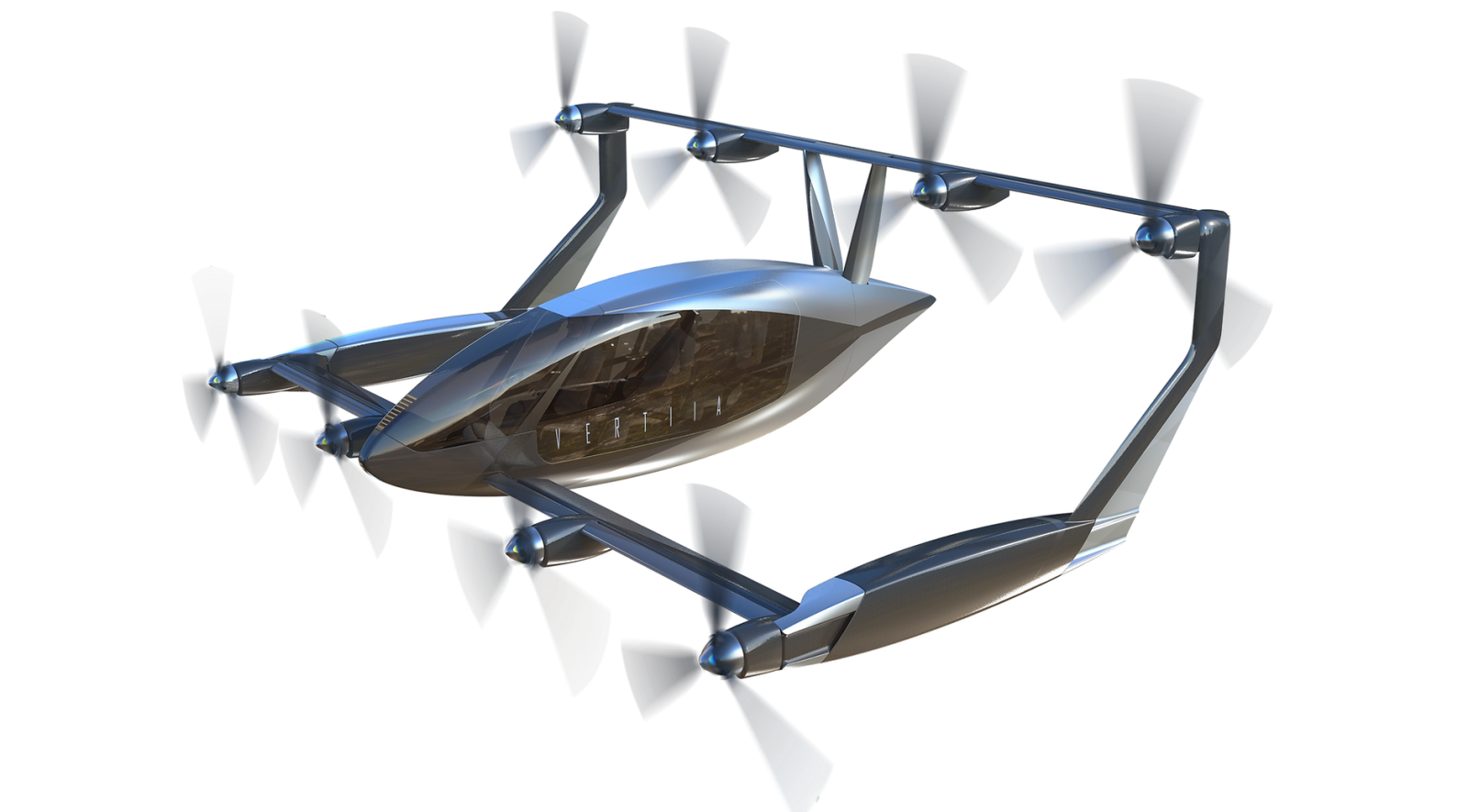
Score one for Oz. Sydney-based developer of the Vertiia electric vertical takeoff and landing aircraft, AMSL Aero, says it has become the first Australian company to test-fly a next-generation plane entirely designed and produced in the country.
Perhaps even more remarkable than AMSL Aero’s national eVTOL precedent, however, are the impressive capabilities it says the Vertiia craft possesses. Many similar craft can match its four-passengers-plus-pilot capacities, cruising speeds of 300 km/h, and 250 km flight range when Vertiia operates exclusively on batteries. But when fitted as planned with hydrogen cells, it can fly up to 1,000 km – three times the distance of other planes in its category.
AMSL Aero revealed this week that it had successfully completed the maiden hover flight of its Vertiia eVTOL in a tethered operation in the central-west region of its New South Wales home state. It said the trial was carried out according to rules stipulated by Australia’s Civil Aviation Safety Authority (CASA), with which the company will initiate the certification procedures in coming months.
The Vertiia uses a so-called “boxed-wing” design that AMSL Aero borrowed for its eVTOL from Aussie aeronautical pioneer Lawrence Hargrave, who invented the box kite 13 decades ago during his experiments.
AMSL Aero chief executive Andrew Moore likened the high-tech craft’s first hover test to that initially successful attempt to fashion wood, paper, and string into something capable of sustainable flight.
“As Vertiia lifted off, we felt the same rush of adrenaline that Lawrence Hargrave must have felt nearly 130 years ago,” said Moore. “The Vertiia prototype flew better than we expected. It was remarkably smooth and a delight to fly.”
Read: Wisk prepares for self-flying air taxi service in Oz’s Queensland
As AMSL Aero continues test flights and prepares for its certification work of Vertiia in cooperation with CASA, the company will begin contacting prospective clients for its eVTOL. Given its potential for extended distances, officials believe it will offer a carbon-reduced, more affordable means of transport in most scenarios currently requiring helicopters. Initial deliveries are expected in 2026.
Company cofounder Siobhan Lyndon says Vertiia will be particularly adapted to aeromedical, cargo, emergency, and regional air mobility operation. Indeed, she notes one objective AMSL Aero has for its eVTOL will be reducing costs and other obstacles that currently undermine using aerial transport in medical, supply, and other activities as a regular means of connecting Australia’s many vulnerable, remote rural and regional communities.
“Unlike aeromedical airplanes that require a runway, Vertiia will carry patients directly from any location straight to the hospital, significantly reducing the complexity and time often required to transport vulnerable patients,” Lyndon says. “It will also be quieter and safer than helicopters, and will eventually cost as little as a car to maintain and run, transforming aeromedical transport into a far more affordable, accessible, safer and reliable option.”
Lyndon notes Vertiia was “developed for the harsh long-distance conditions in Australia,” meaning once the eVTOL proves its chops in the Outback, it’s likely to attract operators of aerial activities in less exacting locales.
“If it can work in Australia, it can work anywhere,” she said.
FTC: We use income earning auto affiliate links. More.



Comments